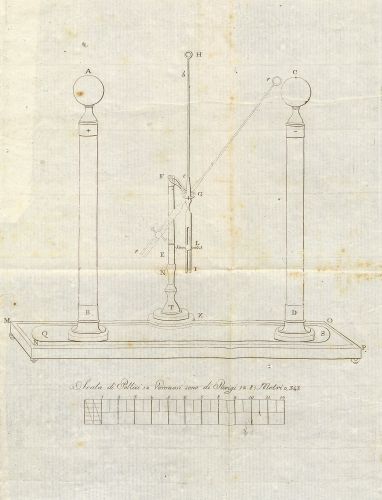Error
Descrizione ed uso dell’elettromotore perpetuo
At the beginning of the 19th century, the study of electricity wasn’t yet sufficiently advanced to allow a full understanding of the limitation of the battery designed by Alessandro Volta (1745-1827) in 1799. The working of the battery depends on a chemical reaction that more or less rapidly exhausts its components. Abbot Giuseppe Zamboni (1776-1846), professor at the Cesareo Regio Liceo-Convitto in Verona, was convinced that he could circumvent the phenomenon by avoiding the use of acids. In L’elettromotore perpetuo (The perpetual electromotor, Verona 1812) he described a dry cell—free of acids—of his own invention. In this second memoir of 1814, the author explains that “The perpetual electromotor is a Voltian battery in which only the natural and ever-present humidity of the paper separates the electromotive cells from each other [...]. Beyond being a perennial source of electricity […] it has […] the power to attract bodies, and this property is particularly applied to the present machine by placing […] an oscillating pendulum between two batteries closed in glass columns ending in a ball […].” Zamboni points out that the perpetually oscillating machine activated by the electromotor, illustrated in a separate plate, was built “by Mr. [Carlo] Streizig watchmaker in Verona at the two Towers.” In case readers of the memoir wanted to get hold of one…


